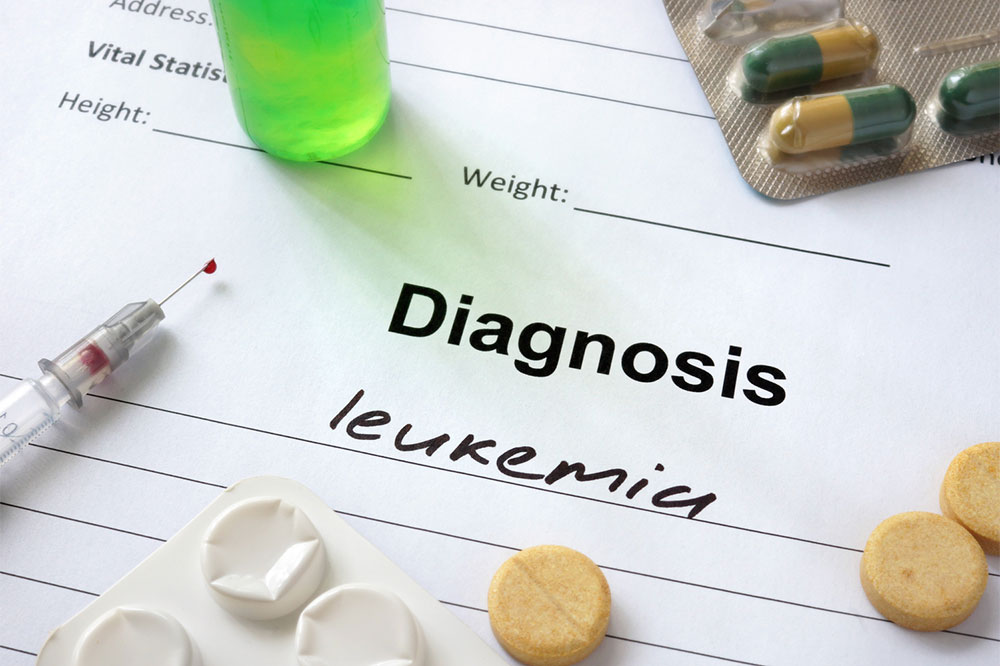Acute Myeloid Leukemia – Stages, Types, Symptoms, Causes, and Therapies

Acute myeloid leukemia is a type of blood cancer that starts in the bone marrow – the soft, spongy tissue inside bones that helps make blood cells. It begins when a certain type of cell in the bone marrow starts growing out of control and turns into several immature white blood cells called myeloid blasts, which cannot fight infection and do not function efficiently. Thus, the body cannot fight infections like a typical immune system.
This can lead to serious health problems, including weakness, fever and chills, bleeding and bruising easily, shortness of breath and trouble breathing (especially when lying down), frequent infections such as pneumonia, bronchitis, or even sepsis. If not treated on time, cancer can quickly spread to one’s bloodstream and other body parts.
Stages
Stage 1
The patient has a low number of immature white blood cells (blasts). This stage is also known as pre-remission or blast crisis.
Stage 2
One has a high number of blasts and low numbers of mature white blood cells. This stage is also known as remission induction.
Stage 3
There are more blasts than mature white blood cells, and one may have cytopenia (low counts of other blood cells). This stage is also known as consolidation or re-induction therapy.
Stage 4
The patient has mostly blast cells and a few mature white blood cells or red blood cells, causing severe anemia and/or thrombocytopenia (low counts of platelets). This stage is also known as post-remission therapy or maintenance therapy.
Types
There are various types of acute myeloid leukemia, and they are often named according to the affected cell type.
Acute myeloid leukemia in remission
This is a case where the patient has undergone treatment for acute myeloid leukemia and is now in remission.
Refractory or recurrent acute myeloid leukemia
In this case, the patient has relapsed after initial treatment or there is no response to treatment or progression of the disease despite standard therapy.
Acute promyelocytic leukemia (APL)
This type is characterized by abnormal white blood cells called promyelocytes, which have a high nucleus-to-cytoplasm ratio and resemble immature granulocytes (neutrophils). This type of cancer usually occurs in older adults (typically over 60 years old), commonly affects men more than women, and tends to progress rapidly unless treated early with chemotherapy treatment options specifically designed for APL patients. Prognosis is good if treated early enough but poor if left untreated.
Symptoms and causes
Acute myeloid leukemia most often occurs in adults but can occur at any age.
Symptoms
Fever
Chills
Night sweats
Feeling full after eating only a small portion of food
Frequent infections such as pneumonia and bronchitis
Excessive bleeding (including nosebleeds or bleeding gums)
Shortness of breath with activity (dyspnea on exertion)
Bone pain (bone pain, bone pain on movement)
Swollen lymph nodes
Weakness and fatigue that worsen over time
Causes
The exact cause of acute myeloid leukemia is unknown. However, it may be linked to genetic changes that occur throughout life. These changes can happen when a cell divides abnormally or becomes damaged by chemotherapy treatments used for another disease or condition. In addition, in some cases, acute myeloid leukemia may be caused by viral infections such as hepatitis B or C.
Treatment options
Chemotherapy
Chemotherapy aims to treat cancer cells and make them unable to grow and multiply. When one has leukemia, their bone marrow makes too many white blood cells called blasts that are immature cells. These blasts are unable to fight infection or help the body make new blood cells as they should. Chemotherapy is used to treat these abnormal blasts to stop the disease from advancing. It also stops the production of any new blasts from forming so that they do not spread throughout the body and cause further problems.
Radiation therapy
Radiation therapy is a treatment that uses high-energy radiation beams to kill cancer cells and shrink tumors. It can destroy cancer cells, relieve pain, and stop the growth of new blood cells that have been affected by acute myeloid leukemia. Radiation therapy can be done externally or internally. In external radiation therapy, a machine outside the body delivers the radiation to one’s tumor. In internal radiation therapy, radioactive material is injected into the patient’s bloodstream or given to them orally. In either case, the radiation kills tumor cells damaged by cancer.
Immunotherapy
Immunotherapy uses the patient’s own immune system to fight cancer cells. It does this by using antibodies to attach themselves to cancer cells and then releasing chemicals that treat those cells. This works because some of these antibodies are specific for certain types of cells—like those found in acute myeloid leukemia—so they can focus on treating only those cancerous cells without harming any healthy cells around them.



